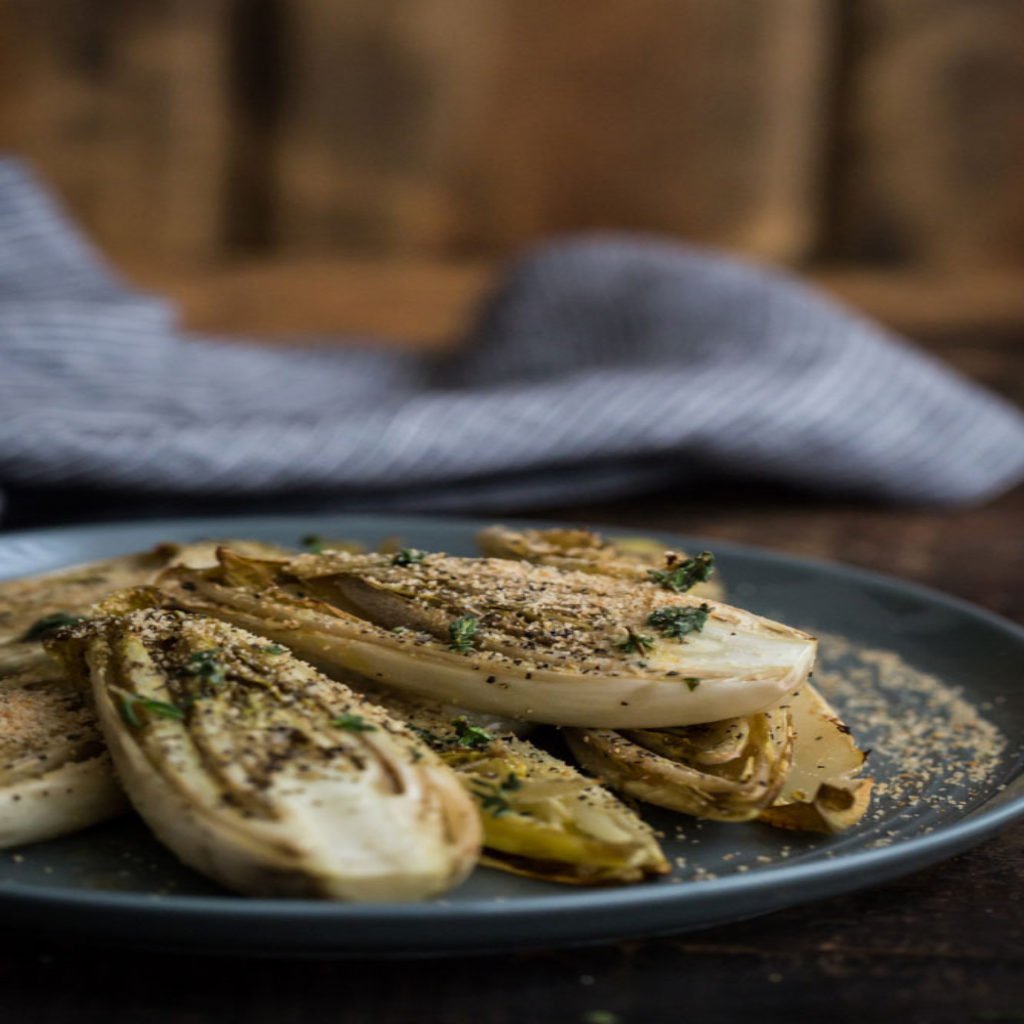Delta Food Feature: Endive
First, let’s settle this once and for all – it is “ON-deev” or “EN-dive”?
Both. Yes, both. “En-dive” is a family of leafy vegetables, all related to chicory and members of the daisy family, including radicchio, frisee, escarole and curly endive. “On-deev” is a spear-shaped, pale white or red-edged bud that is also a variety of chicory, and is commonly known as Belgian Endive.
Growing Belgian endive is a time-consuming and complicated process. First, the chicory is planted outdoors in a field and allowed to grow for approximately five months, until the tap root is sturdy and thick. Then the roots are carefully dug up, the greens cut off, and the roots are placed in cold storage.
One of the benefits of growing Belgian endive is that it is a year-round crop – the roots simply stay in cold storage until needed, and then they are placed in dark, cool, humid rooms where the second-growth bud forms in about a month and voila! Belgian Endive, always in season.
There are two variants to the history of Belgian endive: One has it that the vegetable was “discovered” in Belgium in 1830 when a farmer named Jan Lammers returned from war to find that the chicory root stored during his absence in his cellar had budded in the dark, producing long, tight pale leaves. (Sound like a short war? It was. The 1830 revolution in Belgium lasted from September 27 to early November, a little over the month needed for that second growth!) He tried cooking and eating the buds, which were crisp, nutty and slightly tangy, and a new gourmet delicacy was born. The other story, which is considerably less romantic, credits a Belgian botanist named Brezier with deliberately developing the plant from coffee chicory root in 1846. Maybe he’d had dinner with Jan.
Belgian endive can be eaten raw or cooked and pack a tremendous amount of nutrition into very few calories – about 1 per leaf, in fact. It is high in fiber and one head delivers more than half the potassium of a whole banana as well as calcium, iron, folate and other minerals, and vitamins B, C and K. Restaurants serve it grilled, steamed or braised as a side dish, and sliced or shredded into salads. The individual leaves are so crisp they can even be used as a dipper for hummus, salsa or guacamole if you don’t want the calories (or gluten) of chips and crackers. Although a gourmet specialty product in North America, in Northern Europe (where it is called “witloof” or white leaf) it is an important winter vegetable.
The sole producer of Belgian Endive in the United States is California Endive Farms, located in Rio Vista. Rich Collins decided to grow endive after hearing a chef complain about the exorbitant price of endive imported from Belgium, and sold his idea to a top San Francisco produce importer who helped bankroll his first farm in 1983. The only other source in North America is a single farm in British Columbia.

